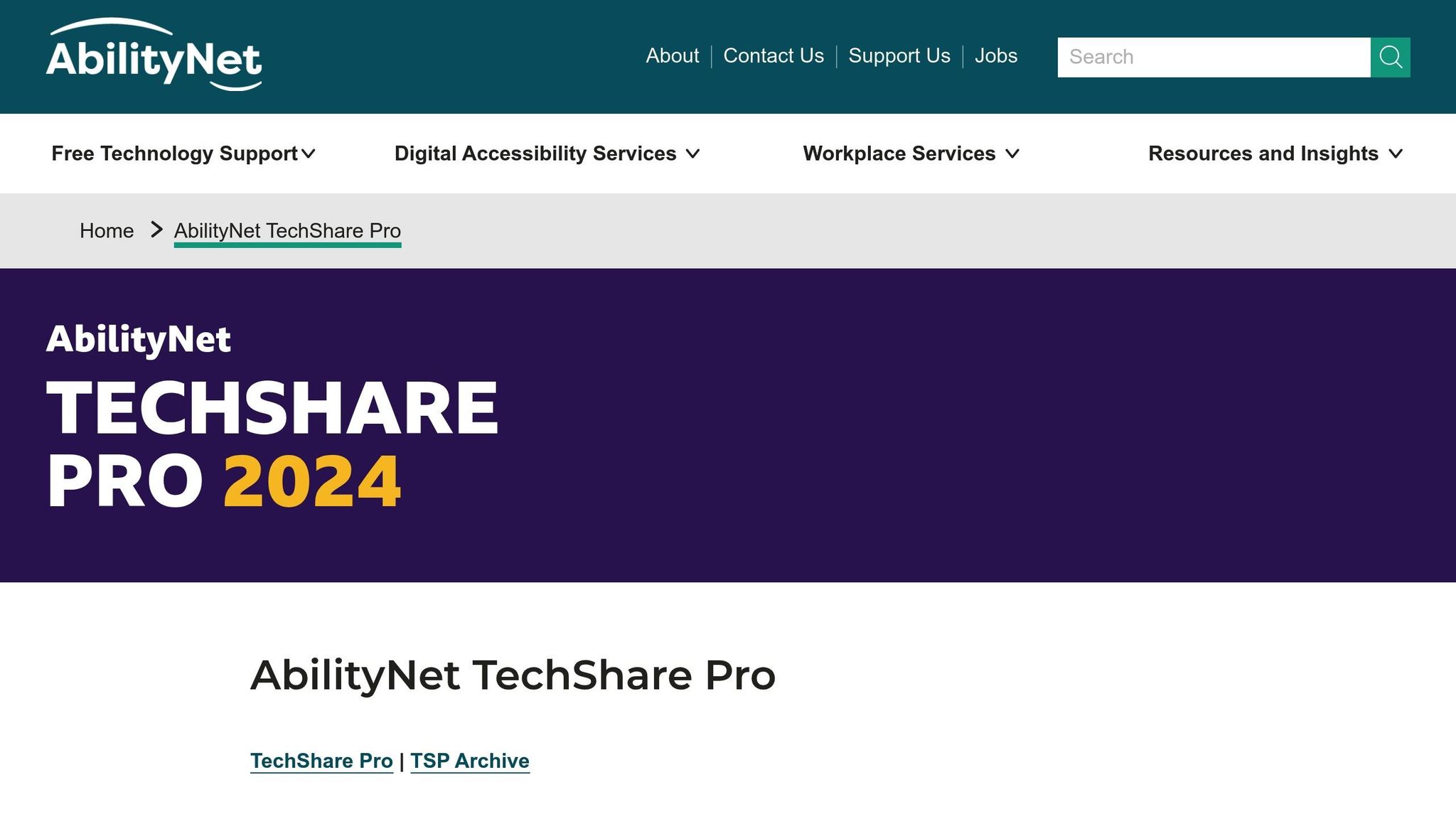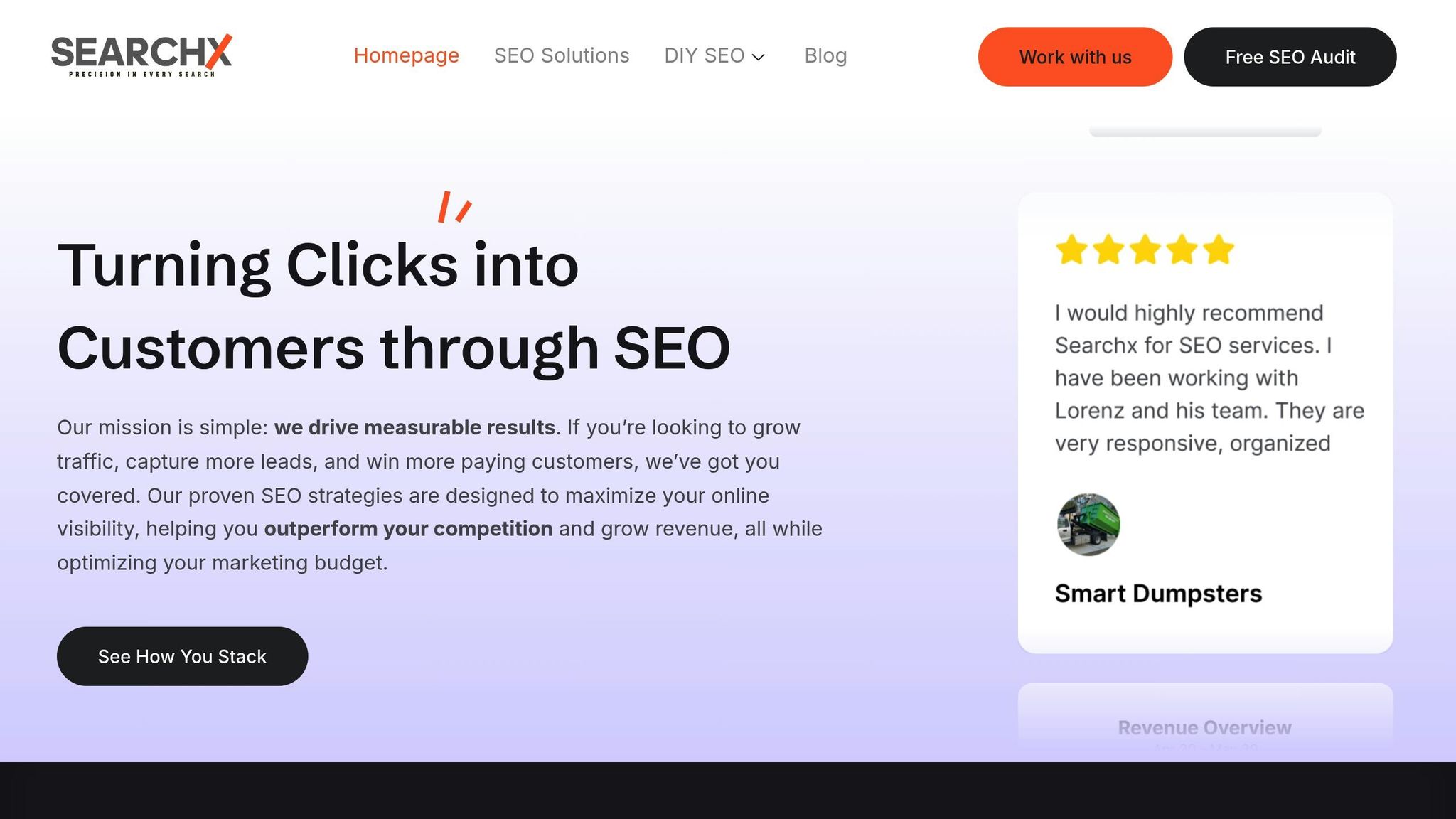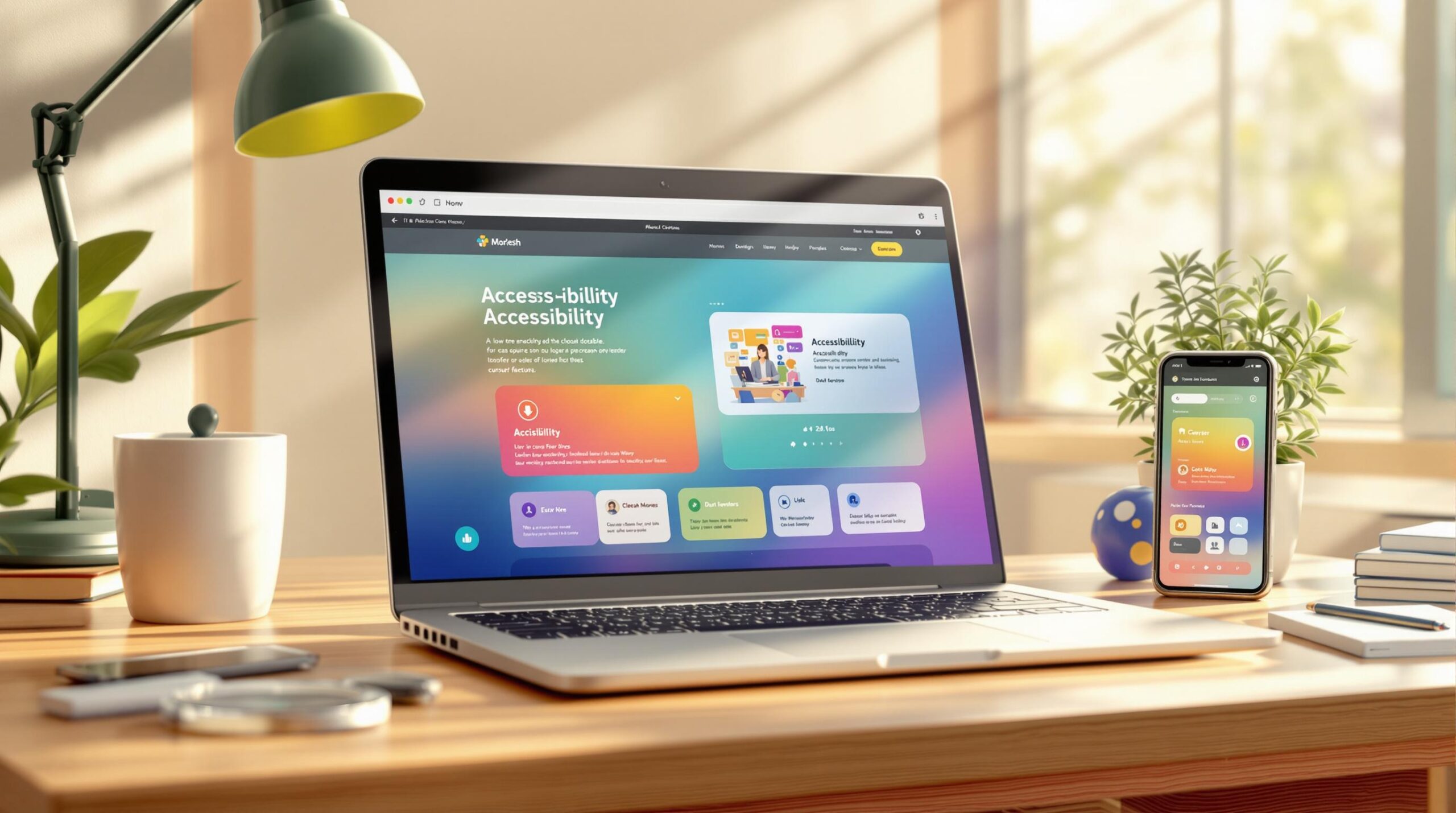SEO and accessibility are two sides of the same coin. By aligning these practices, websites become easier to navigate for all users while improving search rankings. Here’s what you need to know:
- SEO and Accessibility Overlap: Features like alt text, clear navigation, and proper heading structures benefit both search engines and users with disabilities.
- Key Focus Areas:
- Use semantic HTML for better structure.
- Optimize performance (speed, mobile design, clean code).
- Enhance content with descriptive alt text, clear headings, and schema markup.
- Benefits:
- Faster load times improve usability and reduce bounce rates.
- Better keyword relevance and simplified navigation.
- Accessible media (alt text, captions) supports users and SEO.
Challenges include the need for ongoing maintenance, developer training, and testing across platforms. But by integrating these practices, you improve both user experience and search visibility.
Ready to dive deeper? Let’s explore how combining SEO and accessibility creates a stronger, more inclusive web presence.
SEO and Accessibility – a Google perspective – TechShare Pro …

1. SearchX Implementation

SearchX combines SEO and accessibility through a structured technical approach. The goal is to create websites that perform well in search engines while being accessible to all users.
Technical Foundation Implementation
SearchX’s technical SEO services lay the groundwork for better visibility and usability. This involves using semantic HTML to help search engines grasp content hierarchy and improve navigation for screen readers and assistive tools.
The process focuses on three main areas:
- Content Structure Optimization
SearchX improves heading hierarchies (H1-H6) and semantic markup to make content easier to navigate for users with disabilities, while also helping search engines understand the relationships between different sections.
- Technical Accessibility Integration
Key accessibility features include:
- ARIA landmarks and roles
- Keyboard navigation support
- Focus indicators
- Skip navigation links
- Ensuring proper color contrast
- Responsive design adjustments
- Performance Enhancement
Optimizing site speed and performance benefits both SEO and accessibility. Here’s how:
| Performance Metric | SEO Benefit | Accessibility Benefit |
|---|---|---|
| Page Load Speed | Boosts rankings | Provides a smoother experience for all users |
| Mobile Responsiveness | Increases mobile visibility | Improves navigation for users with disabilities |
| Clean Code Structure | Enhances crawlability | Works better with screen readers |
Once technical improvements are in place, SearchX shifts focus to refining content for both SEO and accessibility.
Content Optimization Strategy
SearchX’s content optimization includes:
- Using descriptive anchor text to aid both SEO and screen reader users
- Optimizing alt text to provide meaningful context while incorporating keywords
- Structuring URLs clearly for easier navigation and search visibility
- Adding schema markup to help search engines better interpret content
This approach strengthens SEO by improving accessibility at the same time.
sbb-itb-880d5b6
2. Standard Best Practices
Combining SEO with accessibility benefits both search engines and users, including those with disabilities. Building on SearchX’s technical groundwork, these practices refine the integration of SEO and accessibility.
Semantic HTML Implementation
Using semantic HTML elements enhances content structure for search engines while improving accessibility for users. Here’s how specific elements contribute:
| Element | SEO Impact | Accessibility Benefit |
|---|---|---|
<nav> | Helps crawlers identify navigation | Assists screen readers in finding menus |
<main> | Highlights primary content | Lets users skip directly to main content |
<article> | Defines standalone content | Aids in content understanding |
<aside> | Marks supplementary content | Clarifies relationships between content |
Content Structure Optimization
A well-organized content structure enhances usability and search visibility. Key practices include:
- Writing clear, keyword-focused headings that help both users and search engines.
- Breaking content into smaller, easy-to-read sections with clear transitions.
- Crafting meta descriptions that are both descriptive and compatible with screen readers.
Media Optimization
Optimizing media improves both SEO and accessibility:
- Alt Text: Write descriptive alt text that naturally includes relevant keywords, ensuring it provides clarity and context for both search engines and screen readers.
- Videos: Include accurate closed captions, detailed transcripts, clear audio, and appropriate video schema markup to make videos accessible and SEO-friendly.
Technical Performance Standards
Site performance plays a crucial role in SEO rankings and accessibility. Focus on these areas:
- Ensure page load times are under 3 seconds.
- Use mobile-responsive designs.
- Maintain clean URLs with descriptive slugs.
- Implement schema markup for better search engine understanding.
- Enable keyboard navigation and provide focus indicators.
- Design for responsiveness across all devices.
These practices set a strong foundation for evaluating how well integrated SEO and accessibility efforts perform.
Benefits and Limitations
Blending SEO with accessibility practices brings both advantages and challenges. While the benefits can greatly improve user experience and search performance, implementation does come with its hurdles.
Key Benefits
- Using semantic HTML makes it easier for search engines to index content automatically.
- A well-structured page improves keyword relevance and simplifies navigation for users.
- Faster load times help reduce bounce rates and improve compatibility with assistive devices.
- Proper media handling ensures content is both search engine-friendly and accessible.
Challenges to Implementation
- Complex coding may require ongoing upkeep and additional developer training.
- Creating content that meets both SEO and accessibility standards can be time-consuming.
- Testing across different platforms often demands specialized tools and automation.
- Keeping everything up-to-date requires constant monitoring and scheduled maintenance.
Performance and Resource Management
By combining technical improvements with streamlined workflows, teams can enhance efficiency. Integrated processes for development, testing, and maintenance can improve crawlability, speed up page loading, and boost user engagement.
Successfully balancing these aspects highlights the importance of a thoughtful approach to merging SEO and accessibility.
Key Findings: Integrating SEO and Accessibility for Optimal Results
Combining SEO with accessibility improves both search rankings and user experience. Here’s a summary of the main takeaways from our analysis. As noted earlier, precise technical execution and well-planned content design lead to better results.
Technical Implementation Impact
Strong technical practices deliver clear advantages:
- Semantic HTML improves how search engines crawl your site and ensures better compatibility with screen readers.
- ARIA landmarks make navigation easier and clarify page structure for users.
- Descriptive link text not only boosts accessibility but also encourages more clicks.
Content Optimization Insights
Once the technical foundation is set, content optimization strengthens the connection between SEO and accessibility:
- Using detailed alt text improves how images are understood by both search engines and users.
- A clear header structure (H1-H6) organizes content logically and boosts readability.
- Responsive design ensures your site works well on mobile devices, which also helps with search engine rankings.
Strategic Recommendations
Focus on these priorities:
- Use proper HTML structure and ARIA guidelines.
- Build content that naturally includes keywords while keeping navigation simple and intuitive.
- Regularly perform both automated and manual tests to stay compliant with SEO and accessibility standards.
These insights highlight how aligning SEO and accessibility efforts can deliver better outcomes for both users and search engines.







